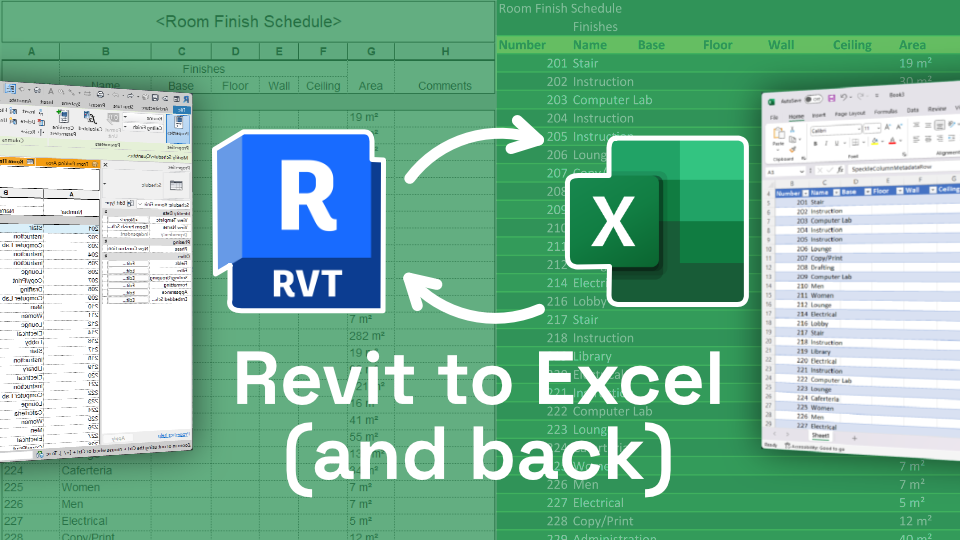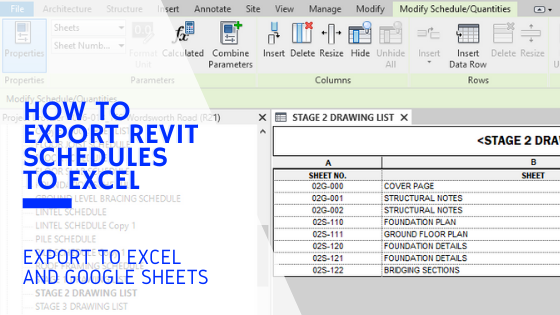Revit Accelerator: Excel Integration Approaches for Enhancing Efficiency and Collaboration
Are you looking to increase your productivity and cooperation while making use of Revit? Look no additional! In this article, we will certainly check out the benefits of incorporating Excel into your Revit workflows. Discover exactly how you can improve your procedures, make best use of partnership, and even find out advanced strategies for enhancing productivity. Plus, we will certainly share best techniques for effortlessly integrating Excel right into your Revit projects. Prepare to supercharge your Revit experience with our Revit Accelerator: Excel Combination Strategies!
Benefits of Excel Combination in Revit
The advantages of Excel integration in Revit are many and can greatly improve efficiency and cooperation. By perfectly connecting these 2 effective tools, you can improve your workflow and conserve useful time. With Excel integration, you can conveniently import and export information between Revit and Excel, permitting you to take advantage of the toughness of both programs.

One more advantage of Excel assimilation is the ability to create dynamic routines and records. By linking your Revit model to an Excel spreadsheet, any type of modifications made in Revit will immediately upgrade in the equivalent Excel documents. This makes it very easy to generate up-to-date routines, amount launches, and various other job documentation.
Excel assimilation in Revit also makes it possible for much better collaboration amongst group participants. With the capability to import and export data, you can quickly share info with colleagues who might not have accessibility to Revit. This advertises reliable communication and allows for better coordination and decision-making.
Enhancing Workflows With Revit and Excel
Improving workflows with Revit and Excel can considerably boost efficiency and partnership. By integrating the capacities of Revit and Excel, you can effortlessly transfer data in between the two applications, getting rid of the demand for hand-operated information entry and decreasing the danger of mistakes.
Making Use Of Revit and Excel with each other enables you to utilize the strengths of each program - revit tools. You can export data from Revit into Excel, where you can execute complex calculations, develop charts and charts, and analyze the information in a more organized and effective way. On the other hand, you can import data from Excel into Revit, allowing you to promptly upgrade your models and documents based on changes made in Excel
The integration of Revit and Excel likewise advertises partnership amongst group participants. By sharing Excel documents, you can quickly collaborate and interact on design and construction-related data. This boosts sychronisation and makes sure that every person is collaborating with the most updated details.
Optimizing Cooperation With Excel and Revit
To make best use of partnership with Excel and Revit, you can effortlessly share and upgrade design and construction-related information with your team. By incorporating Excel with Revit, you can remove the demand for manual information entrance and minimize the threat of errors. With just a few clicks, you can import Excel spreadsheets into your Revit design, permitting you to easily gain access to and control the data. This integration enables you to collaborate much more successfully with your group, as everyone can work on the very same information in real-time.
Among the essential advantages of making use of Excel in conjunction with Revit is the ability to upgrade information in both programs all at once. Any type of adjustments made in Excel will automatically be reflected in Revit, and the other way around. This makes sure that everybody is collaborating with one of the most updated info, preventing complication and saving useful time.
In addition, Excel provides effective tools for analyzing and arranging data, which can substantially improve your collaboration initiatives. You can produce custom records and graphes in Excel, helping you to picture and communicate essential job information effectively. This can be especially useful when providing information to stakeholders or making notified choices based upon project metrics.
Advanced Methods for Boosting Productivity in Revit Utilizing Excel
By using advanced strategies in Revit, you can considerably boost your efficiency by leveraging the power of Excel. One of the essential strategies for boosting efficiency is by utilizing Excel as an information administration device. With Revit's Excel click to investigate integration feature, you can connect Excel spread sheets directly to your Revit version, allowing you to easily manage and upgrade information. This combination enables you to develop routines, determine amounts, and execute data analysis efficiently.

Additionally, you can utilize Excel macros to automate recurring jobs in Revit (import excel into revit). Macros allow you to tape a collection of actions and play them back with a single click, saving you effort and time. You can create a macro to automatically create area timetables or update criterion worths in bulk.
Finest Practices for Excel Integration in Revit
Making Use Of Excel as a data monitoring tool in Revit enables efficient monitoring and upgrading of data. By integrating Excel into your Revit operations, you can enhance your processes and enhance productivity. Among the best methods for Excel integration in Revit is to create a clear and organized data structure. This implies developing your Excel spreadsheets with columns and rows that line up with the specifications and classifications in your Revit project. By doing so, you can easily import and export data between Revit and Excel with no confusion. An additional ideal technique is to make use of solutions and functions in Excel to automate calculations and data manipulation. This can conserve you time and make certain precision in your information administration. Furthermore, it is very important to consistently upgrade your Excel spread sheets and sync them with your Revit project. This way, any kind of adjustments made in Revit will certainly be reflected in your Excel files, helpful hints and the other way around. By complying with these finest practices, you can effectively make use of Excel as a data management device in Revit and improve your productivity and collaboration.
Conclusion
To conclude, integrating Excel with Revit can greatly improve productivity and partnership in the design process. By streamlining process and making best use of cooperation, teams can function extra effectively and properly. Advanced techniques, such as using Excel macros and formulas, can better enhance performance in Revit. It is essential to comply with ideal practices to guarantee smooth assimilation and stay clear of any potential problems. By leveraging the power of Excel, Revit individuals can attain greater levels of productivity and collaboration in their jobs.
With Excel integration, you can easily import and export data between Revit and Excel, allowing you to utilize the toughness of both programs.
One of the vital benefits of Excel assimilation is the capacity to utilize Excel solutions and features within Revit. By linking your Revit model to an Excel spreadsheet, any changes made in Revit will instantly upgrade in the equivalent Excel data. On the other hand, you can import data from pop over here Excel right into Revit, allowing you to swiftly update your models and documentation based on changes made in Excel.
With Revit's Excel integration attribute, you can connect Excel spread sheets directly to your Revit model, allowing you to conveniently take care of and upgrade data.